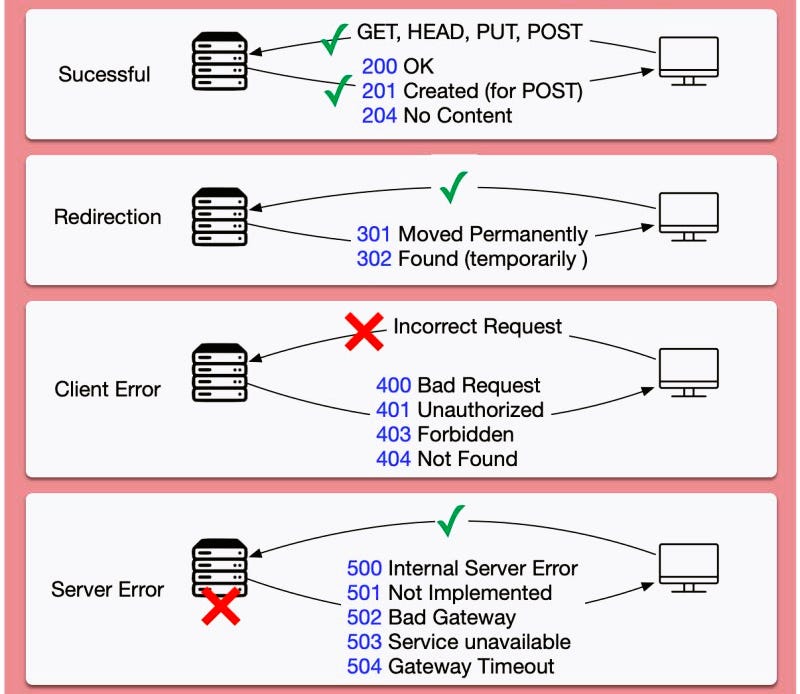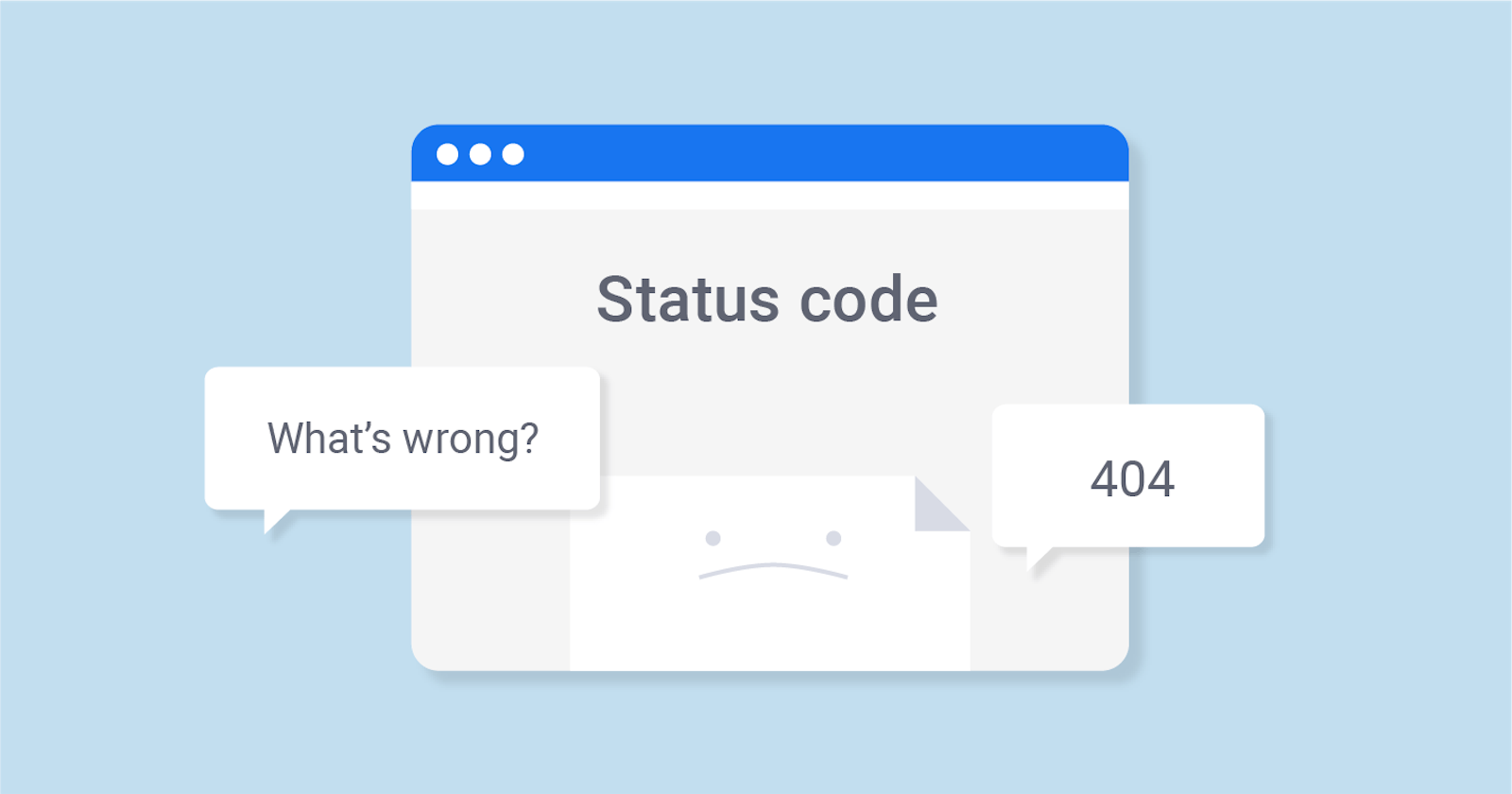HTTP Status Codes
Understanding the Meaning and Significance of HTTP Status Codes
What are the most common HTTP status codes?
HTTP status codes are essential in understanding the response returned by a server after making an HTTP request. They provide information about the status of the request and response from the server.
🎯HTTP response codes are categorized into five groups:
Informational (100-199)
Success (200-299)
Redirection (300-399)
Client Error (400-499)
Server Error (500-599)

🎯Here are some of the most common HTTP status codes:
200 OK: This status code indicates that the request was successful.
404 Not Found: This status code indicates that the requested resource could not be found on the server.
500 Internal Server Error: This status code indicates that there was an error on the server that prevented the request from being fulfilled.
401 Unauthorized: This status code indicates that the client is not authorized to access the requested resource.
403 Forbidden: This status code indicates that the client does not have permission to access the requested resource.
These codes are just a few examples of the many HTTP status codes that exist. The exact list of most common HTTP status codes can vary depending on the context and the specific application.
🤔Over to you:
HTTP status code 401 is for Unauthorized. Can you explain the difference between authentication and authorization, and which one code 401 check for?👀
Let me know in the comments😀
🎯Conclusion
HTTP status codes are essential in understanding the response returned by a server after making an HTTP request. By categorizing the codes and having a clear set of definitions for each, developers can quickly identify and troubleshoot issues with their applications.
That's all for today.
If you enjoyed this content, please share your feedback and consider retweeting the first tweet 😀.
New to my profile? 🎉
Hey! I am Ayush, a full-stack developer from India. I tweet and document my coding journey 🌸.
Follow @ayushsoni1010 for more content like this 🔥 😉.
